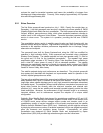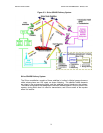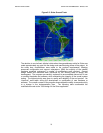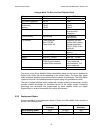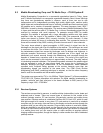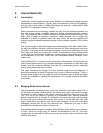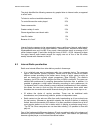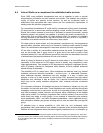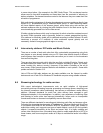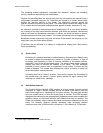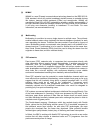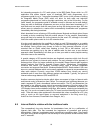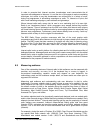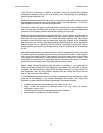
DIGITAL RADIO GUIDE INTERNET RADIO
78
6.4 Internet Radio as a complement to established radio services
Since 1995, most traditional broadcasters have set up websites in order to provide
complementary information for their listeners and viewers. The websites can provide a
variety of textual and pictorial on-line services, as well as on-demand audio or
audio/video clips associated with news events and live (continuous) reproduction of
existing radio and television programmes.
For conventional broadcasters IR could usefully complement existing on-air broadcasts.
IR works best as a narrow-cast medium targeting a small number of concurrent users.
Should this number increase to more than a thousand (or several thousands), Internet
streaming servers are generally not capable of providing the streams economically. In
other words, IR is only really useful if it is kept relatively small. For example, it is probably
not very sensible to use Internet for big one-off events such as Live 8 on 2 July 2005,
13
as satellite or terrestrial networks can reach many more people.
IR is best suited to niche content, such as education, specialist music, and programmes
aimed at ethnic minorities, which may be of interest to a relatively small number of people.
Often it is considered too extravagant to use scarce spectrum for such programmes.
IR can offer a solution for communities scattered across the world. For example, there
may not be enough fans of gypsy music in a given part of the world to justify a local
broadcast station, but if we add listeners around the world who are interested in this kind
of entertainment the potential audience will look a lot healthier.
While it is easy to introduce a new IR stream for niche radios, it is more difficult, if not
impossible, to find spectrum for FM station, which is already very congested in some
large agglomerations. One example is SR International's Immigrant Languages Service,
which is primarily intended for immigrants within Sweden, but also reaches audiences
abroad through its webcasts.
The scalability of IR is a major issue. When audiences are relatively small (e.g. several
hundreds concurrent listeners), bandwidth – and thus cost – is reasonable. However,
when audiences increase, operational cost may escalate. In a way, a station may
become a victim of its own success. A peer-to-peer (P2P) approach may help reduce
distribution cost. Multicast is also an option, but it requires multicast-enabled routers
which may not be readily available everywhere. Also, multicast excludes on-demand
delivery.
IR is inherently interactive. IR websites are places for listeners to interact not only with
the station, but also with each other. These interactions are usually achieved through text
messages, e-mail forums or chat rooms, as well as in a growing number of cases, audio
and video messages. Indeed, listeners may become active contributors to the website
audio-visual content. For example, programme files could be mailed in from around the
world direct from artists or music groups. As an example of interactivity and audience
active participation, NRK - and other European broadcasters - have organised country-
wide contests of amateur pop groups, allowing users to vote and select the most popular
group.
IR websites have a unique possibility to offer both live and on-demand audio
programmes. Many radio stations have created on-demand online archives enabling their
listeners to hear programme items that were originally broadcast on-air, for example, up
13
Musicians and artists from around the world joined together to influence the struggle to end global poverty. There were
pop music concerts from 9 different places around the globe on the same day with several hundreds million watching
on TV and listening to the radio. Among others, WorldSpace UPOP Music Channel 29 transmitted the concerts in
real time (live).



